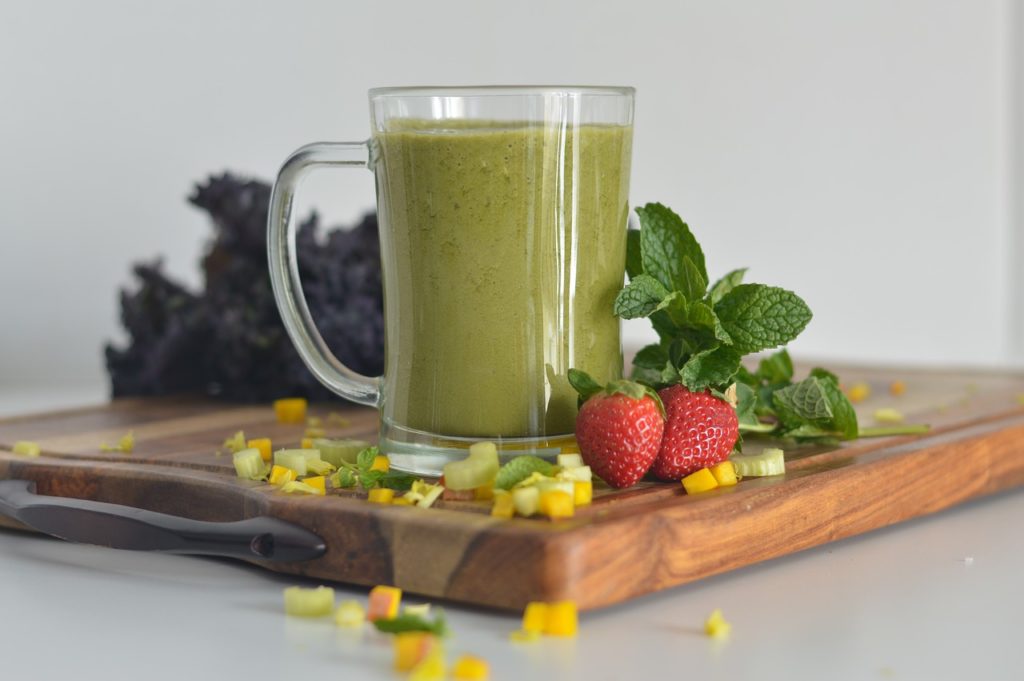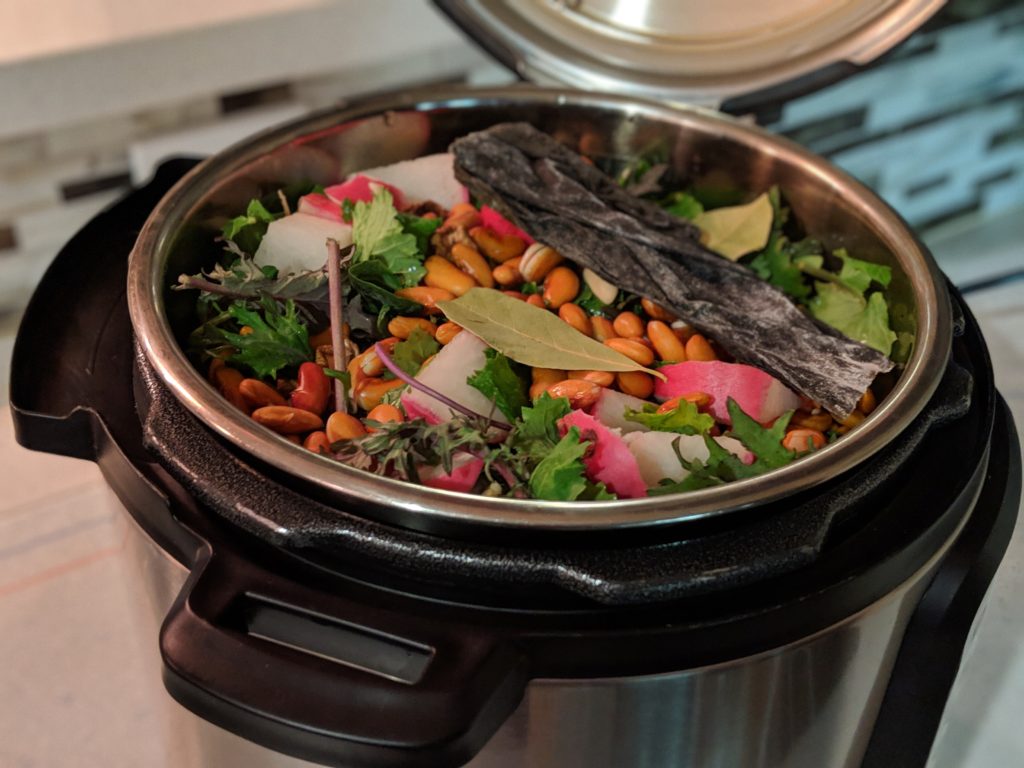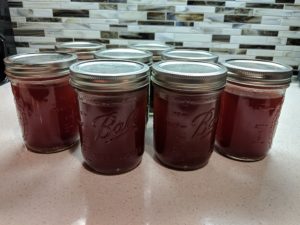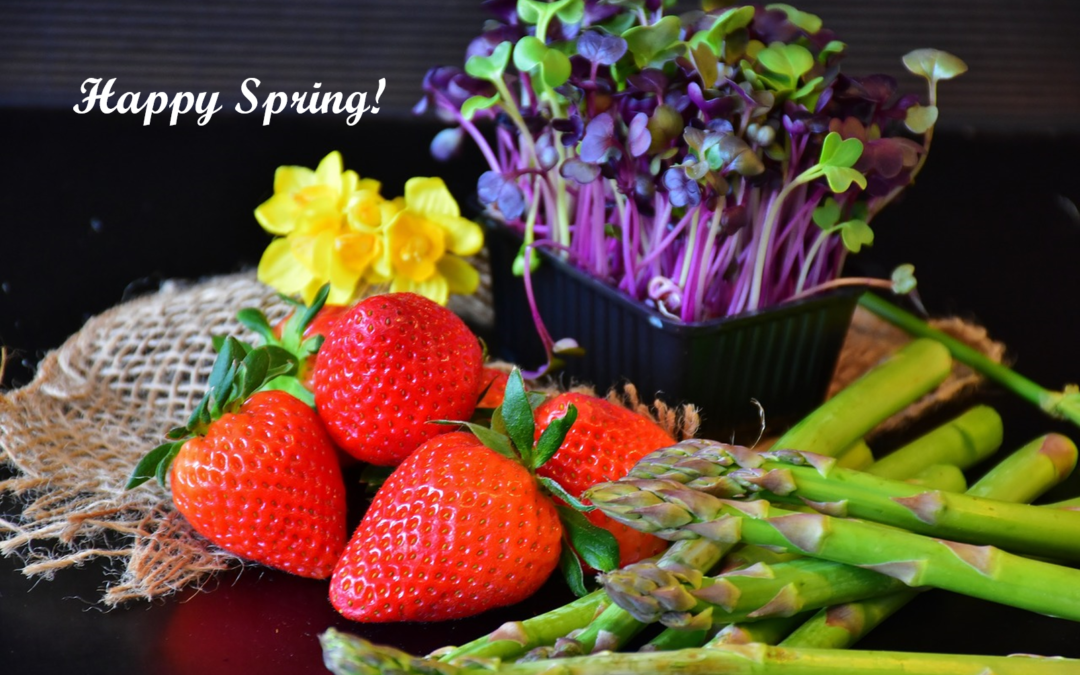In my previous two blogs (Simple Guidelines for Health Eating, Are Carbs and Sugars All Bad), I summarized the latest scientific evidence from clinical research on what a healthy composition and sources of macronutrients (i.e., carbohydrates, fats, proteins) should be in our diet.
Indeed, eating a large proportion of complex carbohydrates (~50-75% of our daily calories), primarily from whole fruits and vegetables, with low-to-moderate amount of legumes and whole grains is good for health!
In addition, it is important to eat rainbow colors of different types of fruits and vegetables to obtain diverse types of phytonutrients (i.e. plant nutrients) that is filled with anti-oxidation, anti-inflammatory and various health promoting properties.
The question then is how we can add more fruits and vegetables to our daily diet in a more palatable and relatively less time-consuming way.
Here are two ways I would like to share with you:
- Fruits and vegetables smoothies (yes, it can be delicious! 😊)
- Vegetable-based soup and stock
Smoothies made with raw fruits and vegetables may not be for everyone, depending on the health of the digestion function, body conditions and also seasons of the year (according to Ayurveda, the ancient health science from India, and Traditional Chinese Medicine).
Therefore, I provide here a cooked version as well, i.e. the vegetable-based soup and stock.
If you are not used to having high fiber content in your current diet, it would be better to increase the amount of fruits and vegetables and fibers gradually to allow your digestive system to adapt.
Hope you enjoy the recipes below!
Fruits and Vegetables Smoothies

Here is a basic recipe. You can adjust the amount and combination based on your own preference.
The key thing to note is to aim for quite a bit larger proportion of vegetables than fruits in order to lower the blood sugar effect (i.e., glycemic index and glycemic load).
You may start with a higher proportion of fruits in the beginning and slowly increase the amount of vegetables as your taste buds get adjusted through time.
Basic ingredients:
- One seasonal fruit or 1 cup of seasonal fruit
- Tips: In fall and winter time, I typically use 1 apple or 1 pomegranate. In the spring and summer, I use 1 cup of berries or 1 peach, 1 banana, etc.
- 3-4 cups of packed leafy vegetables
- Tips: A simpler and less time-consuming way is to buy pre-washed mixed greens from farmers’ market or grocery store. Try to aim for dark leafy greens and other colored leafy vegetables (e.g. red/purple radicchio, red chards).
- Tips: My current daily breakfast smoothies is ~ 4 cups of packed leafy vegetables. You may start with 1-2 cups at the beginning.
- 1-2 tablespoon flaxseeds (or ground flaxseeds) or chia seeds
- Tips: Both are good sources of healthy omega-3 fats and fibers. Additionally, flaxseed contains the compound lignan that has hormone regulating and anticancer effects.
- 1-2 tablespoon of hemp seeds for added protein and healthy fats
- Tips: You can choose to use other protein powder, but it is important to check the ingredient list. I generally prefer to consume whole foods.
- ~1 cup of water or other liquid
- Tips: Adjust the amount of liquid based on the water content of the fruits you have chosen, and your preference of the consistency of your smoothie.
- Tips: You can use coconut water for added flavor and electrolytes, or other nut milks (e.g. almond milk). (Note that store bought nut milks typically contain some additives and added sugars. I will provide recipes for easy homemade nut milks in later blogs.)
- Tips: Squeeze some lemon juice for some extra vitamin C, antioxidants, and liver support.
Preparation steps:
- Use a high-speed blender to blend all the ingredients together and voila!
- For easier blending, you can blend together the fruits, hemp seeds, flaxseeds and liquid first. Then add the vegetables and blend again.
Some further tips:
- Try to vary the fruits and vegetables you choose and aim for different colors as well. It is important to only use whole fruits and vegetables and avoid any processed foods.
- Emphasize on local and seasonal fruits and vegetables as what is growing in the nature often align with what our body needs.
- Be adventurous and experiment with different types of fruits and vegetables including sprouts, herbs (e.g., parsley, mint) and non-leafy vegetables (e.g. cucumber, celery, jicama).
- Feel free to experiment with some supergreens (e.g. chlorella, spirulina, moringa) but make sure to do that gradually to see how your body reacts and allow your body to adjust.
- Raw fruits and vegetables can be too cooling depending on the season and your body conditions, you can add some ginger and other spices (e.g. cinnamon) for some heat and added flavor.
- You can also further spice it up with some nutmeg, cardamom, turmeric, and add some other flavors such as cacao powder and vanilla extract if you feel like it.
- Make sure the consume the smoothies at room temperature or closer to the body temperature, which facilitates digestion.
- I typically have my smoothie for breakfast. You can experiment and see what works best for your body and your time schedule. It can be mid-morning and mid-afternoon snack as well.
- Make sure to ‘eat’ rather than drink your smoothie, i.e. chew as you consume the smoothie. Chewing stimulates saliva secretion and the digestive process.
- If needed to save time, you can prepare a large batch of smoothies, store them in mason jars and freeze for later consumption. Make sure to defrost back to close to room temperature before consumption.
Be adventurous and experiment with what works for you. In no time, you may find that you have become the smoothie expert!
Vegetable-based Soup and Stock

Here is a basic recipe for vegetable soup and stock. The recipe yields about 2 quarts of stock.
The ingredients give different layers of flavor to the soup. You can adjust the amount and combination of vegetables based on your own preference.
You can use a large stock pot or pressure cooker to prepare a large portion of vegetables soup/stock and freeze it for later consumption or use in other recipes.
Basic ingredients:
- 3-4 root vegetables (e.g. sweet potato, yam, squash, radish, turnip, beet, carrot, etc.)
- 2-3 bunches of leafy greens (e.g. kale, chard, parley, cabbage, beet greens, radish greens)
- Some other vegetables of your choice (e.g. celery, tomato)
- 1-2 alliums (e.g. leek, onion)
- ½ cup of shitake mushroom or other types of mushroom. This helps to bring a umami flavor to your soup.
- ¼ to ½ cup of dried beans (e.g. cranberry beans, black beans, pinto beans, etc.). This adds proteins and other nutrients to the soup.
- Tips: Soak the dried beans overnight or for about 24 hours, changing water about every 8 hours. I often sprout the soaked beans for another day or so. Soaking and sprouting increase the digestibility and nutrient content (e.g. anti-oxidant) of beans.
- 1 strip of kelp. This adds another layer of flavor and added nutrients (including iodine and diverse range of phytonutrients).
- Some spices, e.g., 1-2 inch piece of ginger, ~2 peppercorns, ~2 bay leaves
- Tips: You can experiment with other spices. I prefer to keep the basic soup/stock simple. Later on, when I use the stock/soup as a base for other recipes, I will add other spices and flavor.
- ~2 quarts of water (adjust the amount of water such that all the ingredients are submerged under the water).
Preparation steps:
- Put all the ingredients in a stock pot or pressure cooker.
- Bring to boil and simmer for about 60 minutes in a stock pot or 30-40 minutes in a pressure cooker. I use an electric pressure cooker, which is quite convenient.
- After it is cooked, you can decide how you want to consume or store the soup for later use, e.g.
- Keep the soup as is with the vegetables intact
- Strain the soup and just keep the stock
- Blend the liquid and vegetables to make a thick soup
- You can consume the soup right away, in which case you can add some sea salt and other spices.

- You can also freeze the soup/stock for later use, in which case there is no need to add sea salt or other spices at this point.
- Tips: You can store the soup/stock in mason jars in the freezer or you can even store the stock in ice cube container so that you can conveniently use a small portion for cooking later.
Some further tips:
- Just like the smoothie, try to vary the vegetables you choose and aim for different colors as well. Aim for local and seasonal vegetables.
- You can use kitchen scraps and also take the opportunity to use up any left-over uncooked vegetables in your fridge.
- Some ideas for using the vegetable stock:
- Use it as base for other soups, chilis, stews etc.
- Use it to make Asian noodle soups, e.g. Japanese ramen, Vietnamese Pho, etc.
- Keep in mind that if we only consume the stock without the vegetables, we are missing the beneficial fibers and some nutrients remained in the vegetables.
- Prepare a large pot of soup during the weekend and use/consume it during weekdays to save time and effort, while still enjoying the abundant flavor and nutrients.
Enjoy!
Related Articles
Simple Guidelines for Healthy Eating
Diets and Chronic Disease (Part 1: Type 2 Diabetes)
Diets and Chronic Disease (Part 2: Hypertension)
Diets and Chronic Disease (Part 3: Heart Disease)

